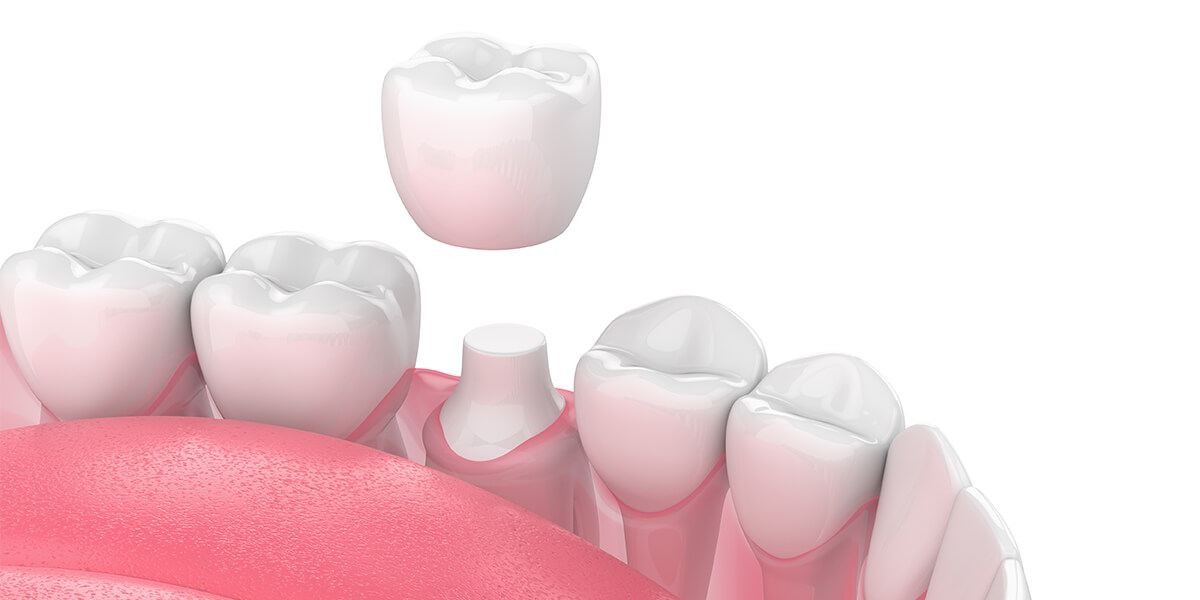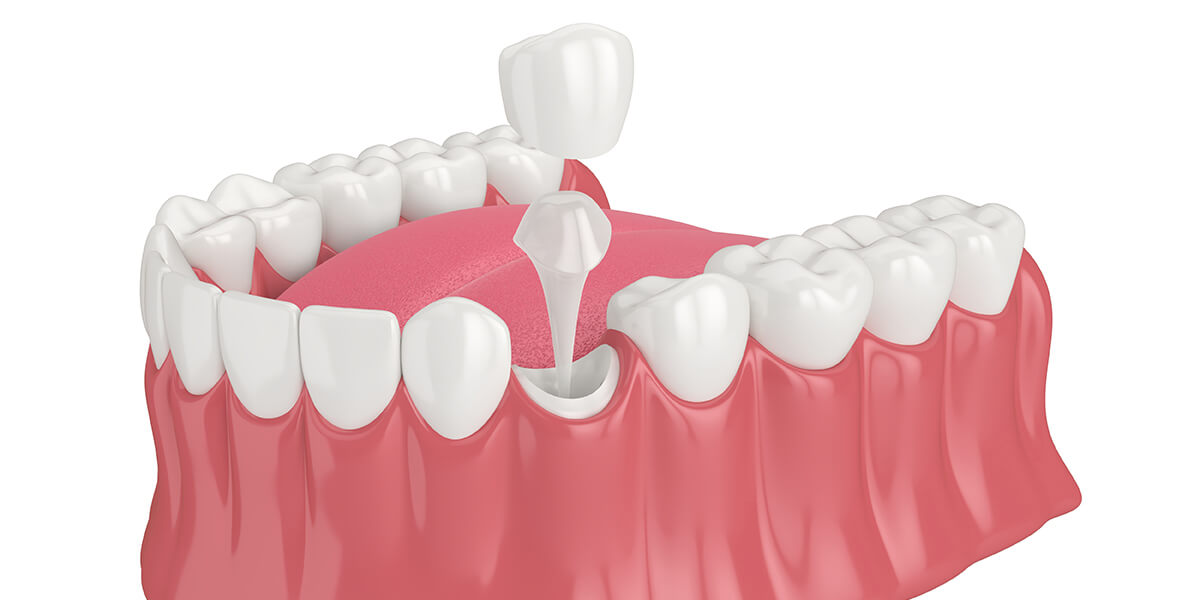Dental crowns are restorations that completely cover an existing tooth. Crowns are used to rebuild broken and decayed teeth, strengthen teeth, or to improve the cosmetic appearance of a tooth.
Types of Crowns
- Metal Crowns are very durable and last longer than other crown types. Wear to opposing teeth is kept to a minimum and less tooth structure needs to be removed to prepare for placement of these crowns. The drawback is the metallic color. They are a good choice for back teeth (molars) that are not highly visible. Metals used in crowns are gold, alloy, or other types of alloys including palladium or nickel.
- Porcelain/Ceramic Crowns provide the best natural tooth color match compared to any other crown type and may be more suitable for people with metal allergies. However, they are not as strong as porcelain-fused-to-metal crowns. They also wear down opposing teeth a little more than metal or resin crowns. All-ceramic crowns are very aesthetically pleasing and are a good choice for front teeth.
- Porcelain-Fused-To-Metal Crowns like porcelain crowns can be color matched to your adjacent teeth and look most like your natural teeth. The addition of the metal creates a stronger and more durable crown. In some instances, especially in the case of a receding gum line, the metal underlying the crown’s porcelain can show through as a dark line. These crowns can be a good choice for front or back tooth placement.
- Temporary crowns are used to protect a tooth prepped for a permanent crown while you wait for it to be made at the dental lab. If left uncovered you could experience pain, sensitivity, damage to the periodontal tissues, and possible shifting of the prepped tooth. The temporary crown resembles your natural teeth so that you can continue with your daily life without worrying about a missing or incompatible tooth. It is placed using a temporary cement so you must take care to avoid flossing, chewing gum, or eating sticky hard food while wearing the temporary crown.
The type of crown selected is determined by what is most appropriate for your situation. You can be comfortable in knowing that your new tooth will be virtually unnoticeable and will flawlessly complement the rest of your smile.
How it’s done…

Your tooth and the surrounding tissues are numbed. All decay is removed from the tooth. The tooth is prepped by either reducing it or building it up with filling material. The tooth is then shaped so that it is ready to receive the crown. An impression is taken of the tooth using a putty-like material. In the case of a porcelain crown, the dentist selects the proper tooth shade for your crown using a shade guide to find the closest match to teeth surrounding the prepped tooth. You have the final decision in deciding what color matches best. The impression is sent to the dental lab where your new restoration is crafted. A temporary crown is placed over your prepped tooth to protect it until the crown comes back from the lab.
When the finished crown arrives the process of cementing the tooth begins. Your tooth is numbed and the temporary crown is then removed. The new crown is evaluated for proper fit and any adjustments to the fit are made on the spot. Every effort is made to ensure the new tooth feels exactly like one of your natural teeth. Finally, the crown is permanently cemented over the prepped tooth. A dental tool is used to scrape away any excess cement and you are on your way!
How long does it last?
On average dental crowns last about 10 years. Longevity can be anywhere from 5-15 years or longer. These numbers are dependent on environmental factors such as tooth grinding, chewing, biting, accidental trauma, and, you guessed it, how well you care for your tooth.



